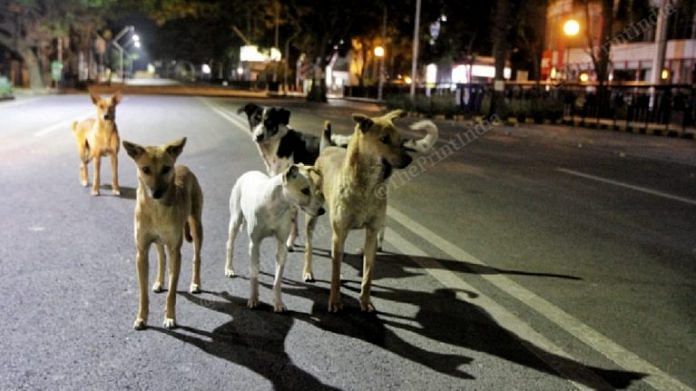Bengaluru: A new coronavirus has been detected in Malaysia and is likely to have come from dogs, according to a new study. But whether this virus is a threat to humans is yet to be determined by scientists.
Called CCoV-HuPn-2018, the virus is the newest coronavirus to jump to humans after the emergence of SARS-CoV-2, which is causing the present pandemic. It is a novel canine-feline recombinant alphacoronavirus and was isolated from human pneumonia patients in Malaysia in 2017 and 2018.
This is the first instance of a canine coronavirus to have been found in humans. If the virus is confirmed to be a pathogen or a spreader of disease among humans, it will be only the eighth unique coronavirus that is known to cause disease in humans.
The authors of the report stress that it is as yet unclear whether the virus is a threat to humans, and the study does not prove that the virus caused pneumonia. There is no evidence of even human-to-human transmission yet. However, the authors say the findings underscore the public health threat of animal coronaviruses, their risk to humans and the need for better surveillance.
The findings were published in the Clinical Infectious Diseases journal Thursday.
Also read: Can a dog tell if you have Covid? Yes, according to a new study
Coronaviruses in humans
Coronaviruses are a group of viruses that are divided into four categories: alphacoronavirus, betacoronavirus, deltacoronavirus and gammacoronavirus. These viruses cause infections in animals and birds, and the first ones were identified in the 1920s.
Human coronaviruses were identified in the 1960s and these tend to belong to the alpha and beta CoV genera.
The human coronaviruses, HCoV-229E and HCoV-NL63, both of which cause mild common colds today, are alphacoronaviruses. The common cold causing HCoV-OC43 and HCoV-HKU1, as well as the more deadly SARS-CoV and MERS-CoV, are betacoronaviruses, as is the SARS-CoV-2 virus.
The new virus CCoV-HuPn-2018 is an alphacoronavirus.
While there is no evidence to directly conclude that the virus was transmitted to humans from dogs, scientists note the genome sequence of the virus indicates this was the most likely route of transmission. There also remains a small possibility that there might have been an intermediate host, likely a cat.
When the Covid-19 pandemic began last year, Dr Gregory Gray, an infectious disease epidemiologist at Duke University and an author of the study, along with his graduate student Leshan Xiu, decided to find out whether there already are other human coronaviruses that we haven’t identified.
Xiu and Gray developed tools that detected multiple types of coronaviruses in humans.
In the very first batch of samples tested last year in Sarawak, Malaysia, the team discovered an entirely new novel coronavirus that was associated with patients hospitalised with pneumonia, mainly children. These samples had been procured in 2017 and 2018, and the patients seemingly had regular pneumonia.
However, in eight of the 301 samples tested, the team discovered that the patients’ upper respiratory tracts were infected with a new canine coronavirus.
The team then contacted Ohio State University virologist Anastasia Vlasova, an expert on animal coronaviruses and first author of the paper. Fascinated by what was the very first recorded transmission of canine coronavirus to humans, Vlasova and her team cultured the virus in the lab and sequenced it.
Also read: Covid ‘X Men’ — the 7,000+ mutations in India, how to understand them & where they came from
How CCoV-HuPn-2018 is unique
Vlastova and her team, including fellow author Annika Diaz, discovered something very interesting and unique when they sequenced the genome of CCoV-HuPn-2018. The virus held a mutation in the form of deletion, which is absent in all other canine coronaviruses (and other alphacoronaviruses), but is present in human coronaviruses.
In a genetic sequence, a deletion in the sequence causes a deletion in a nucleotide or amino acid within the RNA molecule. Mutations are commonly introduced during replication.
This deletion, called the 36 nt (12 aa) deletion, resulted in “dramatic changes in its cellular localization soon after its zoonotic transmission” write the authors, stating that the deletion indicates a recent zoonotic transmission or jump from dogs to humans.
The deletion is believed to help the canine virus persist inside human bodies and could be the linking step required for the viruses to jump to humans.
Vlasova’s team further found that two of the eight samples contained high amounts of the novel coronavirus, and one of them was able to cause infection in canine cells in the lab. The sequences also contained fragments of coronaviruses found in cats and pigs.
Zoonotic transmission of viruses is not uncommon. It is thought that most most viruses throughout history, if not all, came to humans from animals. Experts think it likely that there are more undetected and comparatively harmless coronaviruses circulating in humans, and the more we look for them, the more we would find.
However, the virus currently poses no risk of a pandemic, according to the researchers, and its infectivity and pathogenicity is yet to be established. Meanwhile, the findings also pose no further risk to pets and humans when it comes to Covid either.
While both cats and dogs can catch the SARS-CoV-2 virus, they are not believed to transmit it to humans.
Also read: What is double mutation & why it’s the latest buzzword as India sees a Covid surge



